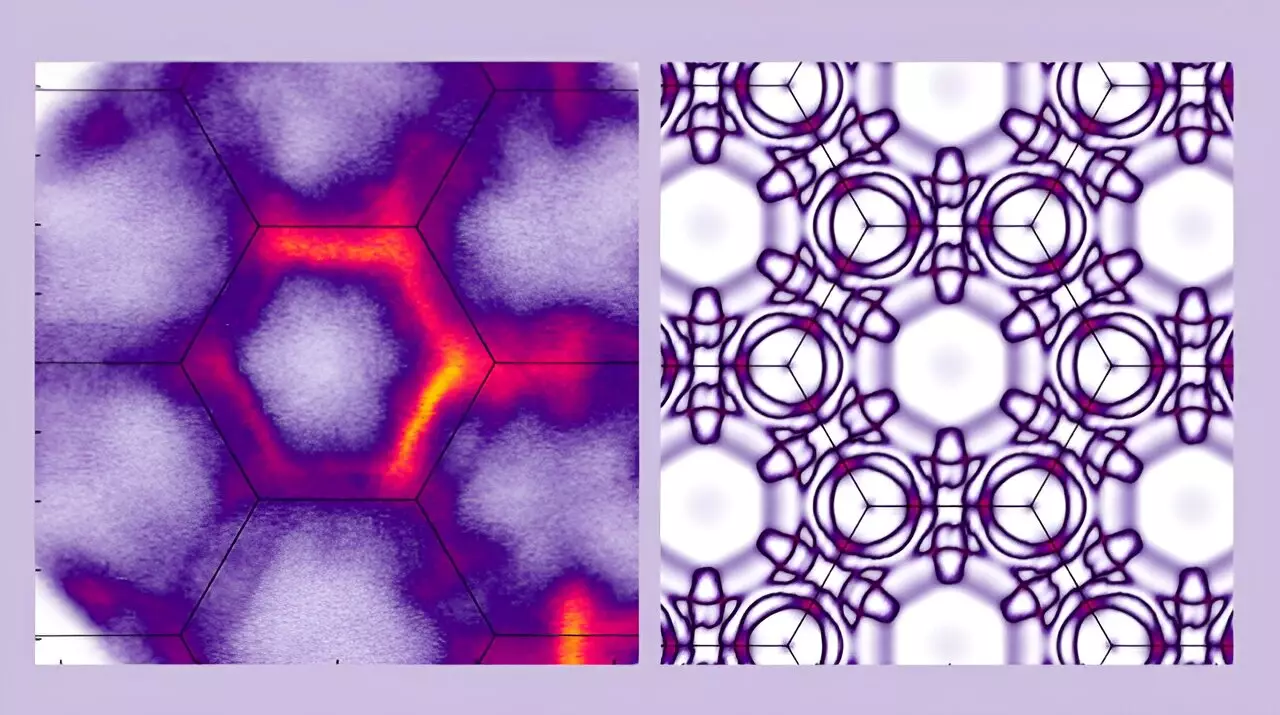The field of quantum computing is rapidly advancing, and scientists from the Quantum Systems Accelerator (QSA) are at the forefront of this revolution. QSA, a collaboration between Lawrence Berkeley National Laboratory (Berkeley Lab) and the University of California, Berkeley (UC Berkeley), is dedicated to designing and building the next generation of programmable quantum devices. In partnership with Los Alamos National Laboratory, the QSA team recently conducted a groundbreaking series of experiments using a novel layered 2D metal. These experiments shed light on the electronic behavior of the material, potentially paving the way for the development of complex superconducting quantum processors. The findings of this research were published in the esteemed journal Physical Review B in December 2022.
One of the key challenges in developing superconducting quantum processors lies in finding suitable materials. Conventional materials such as aluminum, niobium, and silicon have limitations that hinder the fabrication process. In this pursuit, researchers turned to transition metal dichalcogenides (TMDs), a class of exotic metals that can be fabricated into extremely thin layers with a well-defined crystalline structure. TMDs possess unique physical properties that arise from the interactions of their electrons. These tightly packed electrons can exhibit behaviors such as superconductivity and itinerant magnetism, making them ideal candidates for further exploration.
One of the fundamental challenges in the study of TMDs is understanding the interplay between itinerant magnetism and superconductivity. Traditionally, materials have been classified as either superconductors or magnets, but not both. However, TMDs present an intriguing overlap, as the itinerant magnetism phase is closely associated with the superconductivity transition. Recognizing this potential, the QSA team focused their efforts on NiTa4Se8, an intercalated TMD with strongly correlated electrons. This material exhibits a ferromagnetic layer, enhancing the interaction between electrons and offering an opportunity to study both itinerant magnetism and superconductivity.
To investigate the properties of superconductivity and itinerant magnetism in NiTa4Se8, the researchers needed to delve into the material’s internal symmetries. By manipulating the system of atoms and electrons in the layered crystalline metal through various chemical processes and techniques, the team was able to characterize the electronic conduction properties of NiTa4Se8. This comprehensive approach involved stacking, manipulating, and controlling electrons in the laboratory. The results provided valuable insights into the behavior of electrons in this unique material.
State-of-the-Art Instrumentation
A crucial aspect of the research was the utilization of cutting-edge instrumentation and capabilities available at Berkeley Lab. The team leveraged the Advanced Light Source (ALS) and Molecular Foundry, which provided access to advanced techniques such as Angle-Resolved Photoemission Spectroscopy (ARPES) and Energy-dispersive X-ray spectroscopy (EDX). These methods enabled rapid characterization of 2D materials and surfaces, offering a deep understanding of NiTa4Se8’s crystalline structure. The ALS also facilitated measurements of electron behavior and the Fermi surface to study superconductivity in exquisite detail.
The quest for new superconductors is driven by the desire to unlock the full potential of superconducting quantum technologies. Sinéad Griffin, a co-author of the research paper and a researcher at the Molecular Foundry, emphasized the importance of pushing the boundaries of knowledge: “We’re motivated to find a new type of physics or system that no one has seen before. The opportunity to have access to state-of-the-art facilities and instrumentation at Berkeley Lab allows us to explore beyond the limitations of what is currently known.”
Developing quantum devices using novel materials is not without its challenges. The complexity of the materials being studied necessitates a variety of measurements and methodologies. The team recognizes that each technique is specific to a particular system, and as materials are built into quantum devices, their properties may change or defects may arise. To overcome these challenges, theoretical models and calculations are employed to guide the fabrication and characterization processes. With a forward-thinking and imaginative approach, the researchers are continuously striving to discover new phenomena and material combinations.
The QSA team’s exploration of NiTa4Se8 and other magnetic TMDs marks a significant step towards the development of advanced quantum processors. The discovery of correlated itinerant magnetism and unconventional superconductivity in 2D materials refines our understanding of these materials’ fundamental properties and their potential applications. As the QSA continues to tackle the fabrication challenges in quantum technologies, their interdisciplinary approach and access to cutting-edge tools and facilities position them on the forefront of quantum science. By leveraging their expertise and advancing the frontiers of knowledge, the QSA team is shaping the future of quantum computing.


Leave a Reply